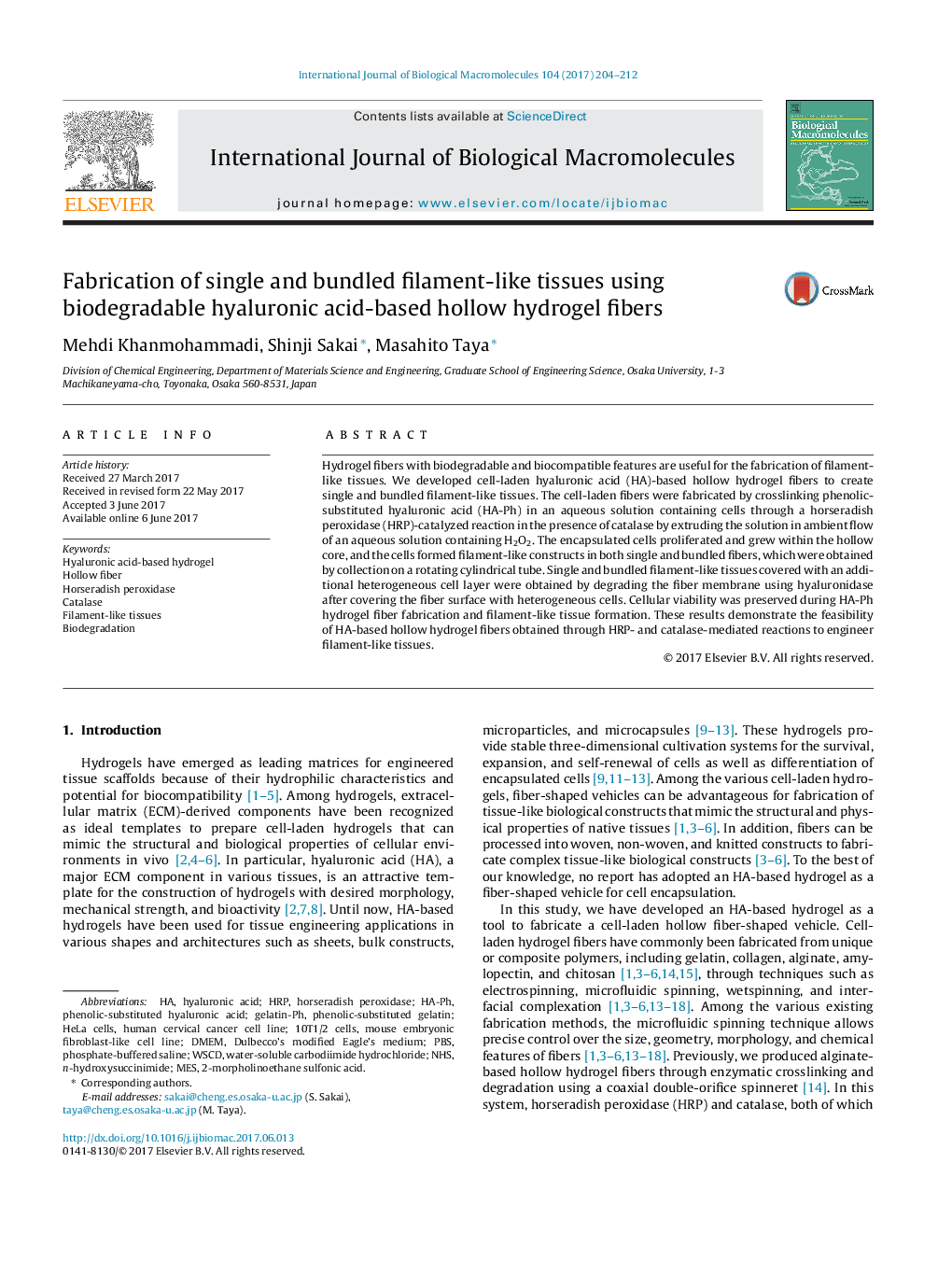| Article ID | Journal | Published Year | Pages | File Type |
|---|---|---|---|---|
| 5511640 | International Journal of Biological Macromolecules | 2017 | 9 Pages |
Hydrogel fibers with biodegradable and biocompatible features are useful for the fabrication of filament-like tissues. We developed cell-laden hyaluronic acid (HA)-based hollow hydrogel fibers to create single and bundled filament-like tissues. The cell-laden fibers were fabricated by crosslinking phenolic-substituted hyaluronic acid (HA-Ph) in an aqueous solution containing cells through a horseradish peroxidase (HRP)-catalyzed reaction in the presence of catalase by extruding the solution in ambient flow of an aqueous solution containing H2O2. The encapsulated cells proliferated and grew within the hollow core, and the cells formed filament-like constructs in both single and bundled fibers, which were obtained by collection on a rotating cylindrical tube. Single and bundled filament-like tissues covered with an additional heterogeneous cell layer were obtained by degrading the fiber membrane using hyaluronidase after covering the fiber surface with heterogeneous cells. Cellular viability was preserved during HA-Ph hydrogel fiber fabrication and filament-like tissue formation. These results demonstrate the feasibility of HA-based hollow hydrogel fibers obtained through HRP- and catalase-mediated reactions to engineer filament-like tissues.
Graphical abstractFabrication of single and bundled filament-like tissues using hyaluronic acid-based hollow hydrogel fibers.Download high-res image (268KB)Download full-size image
